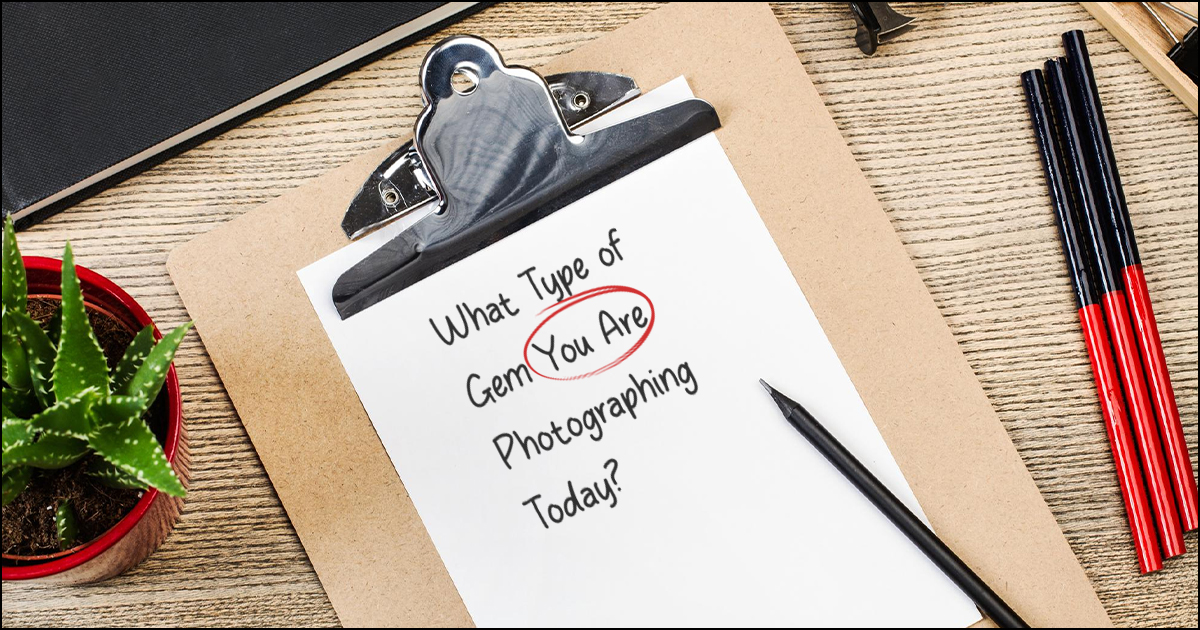Does it ever happen that you wrote a sentence with a grammar mistake you did not know about? It happened to me all the time before I learned about common grammar mistakes and gradually fixed the consistent errors.
So, if you are here to learn about minor grammar mistakes writers consistently make, I am here to help you. In this article, I have covered the 31 most common grammatical errors and explained how to fix them with appropriate examples. Read till the end because it will be super useful to you.
Common Grammar Mistakes Content Writers Make
The grammar mistakes I am going to share with you today are really simple to the point, after reading the article, you will think, OMG, I used to make such silly grammatical errors! However, it is going to change now. You can improve your creative content writing by understanding the mistakes and implementing the correct grammar in your content.
Third-Person Singular Number
Let’s start with the most common grammar mistakes examples. Third-person singular numbers are one of the very first grammar rules we learned in school but still make mistakes. The reason might be we are not completely clear about it. Third-person singular number is used in the simple present tense by adding an -s or -es at the end of the verb.
If you use him, she, it, and any name Robert, London, and others, you need to use -s or -es at the end of the verb like works and builds. The only exception is “They”. Though “they” is a third person, it is plural. Thus, you need to write- they love ice cream. Here is an example of a third-person singular number:
Koloskov don’t care about rules (Wrong)
Koloskov doesn’t care about rules (Right)
Koloskov is a third person singular thus at the end of the verb -es is used. Whether the verb will have -s or -es, will depend on the words. So, you need to study words. The more you read words, the less mistakes you will make.
Articles
Another one of the most common mistakes in English is that causes content writers headaches. It is one of the easiest rules yet get confused about where a, an, and the will be placed. There are two types of articles Definite and Indefinite. A definite article is when you specify the object and an indefinite article is spoken in general. The definite article is “The” and the indefinite article is “A & An”. For example,
Babe, can you buy me a bag, please?- (Indefinite)
Babe, can you buy me the latest addition Gucchi bag?- (Definite)
See the difference? In the first sentence, the person generally asks for the bag but in the second sentence, the person specifies which bag she wants to buy. Thus, when you specifically talk about something use “the” and when you are talking about something in general, use “a & an”.
Its/It’s
Even advanced writers get confused with its and it’s. “Its” is possessive and used for nouns without gender. On the other hand, “it’s” is a contraction of “it is”. The apostrophe before -s indicates a part of a word has been removed. However, when these both words are used in a sentence?
The cat is comfortably sleeping in its favorite position
It’s raining today.
It is really hard to understand when to use what but I can tell you how I understand if I correctly placed it or not. “Its” is usually placed in between sentences to emphasize its subjects and “it’s” is placed at the beginning in the short form of “it is”.
Your/You’re
Just like its and it’s, “your” is possessive or determiner, and “you’re” is the contraction of “you are”. Another difference is that “your” is associated with someone and “you’re” means owning something. For example,
You’re stunningly beautiful
How was your exam today?
Understand the difference? “Your” is associated with the person. “You’re” is only used short for “you are”.
They’re/Their/There
There, their, and they’re sounds quite similar but used for different purposes in sentences. “There” is used to show locations and times. Try to remember there with here because both carry quite similar meanings. “Their” is a possessive pronoun means it is associated with a person. “They’re” is the contraction or short form of “they are”. Some examples will help you understand the meaning better.
There is a car outside.
Their daughter won the tennis match.
They’re going on a tour today.
To/Too
Too is a to with extra o. Just joking but both words are pronounced similarly. “To” is a preposition that is used in various situations and contexts. On the contrary, “too” is a negative adverb that is used to portray excessiveness. For example,
I am going to meet my friend.
That restaurant is too expensive for us.
To and too is also used in combination. For example, She was too weak to walk and I was too tired to go out in the evening.
Me/I
Newbie and beginner writers often get confused with me and I and make grammatical errors. Though both words mean the same thing, they are used differently in sentences. “I” is a subject and “me” is an object. So, you need to use “I” when you are the one acting and use “me” when an action is getting done to you. “Me” is also used as an object in passive sentences. For example,
I left my umbrella in the office.
Do you want me to cook fried rice?
Chicken Fried rice was cooked by me.
Affect/Effect
Affect and effect is another common grammatical error I used to make. I knew the meaning but many times placed affect in place of effect or vice versa. So, let’s clear it out today.
Affect is a verb and it means change or impact of something. On the other hand, the effect is the result of that change or impact. For example,
The floods affected the Chittagong people the most.
One severe effect of the floods was many people had to leave their homes.
See the difference? Affect shows the change or the impact of something and effect is the result of that impact.
Much and Many
The word much is used for uncountable nouns like air, rice, patience, juice, love, hate, happiness, and anything that you can not count with your hands. On the other hand, the word many is also used for large quantities but countable like 2 packets of chips and 5 apples. For example,
I love you so much.
How many packets of chips do you want?
Each and Every
Many times we make grammatical mistakes with each and every term. Though both words are singular quantifiers, both have different meanings and are used for different purposes. The word “each” refers to an individual person/object in a group and the word “every” indicates every member/object of the group. For example,
Each student has to wear a school uniform tomorrow.
Is every student prepared for the weekly quiz?
While the term each and every is used differently, it can be used in one sentence as well. When you use each and every in one sentence, the verb will be singular because the sentence indicates every person/object present in that place. For example,
Each and every child in our colony has a bike.
Lose/Loose
Lose and lose sounds the same when you speak but belong to different parts of speech and have different meanings. Lose is a verb and means when you failed to win, no longer have the object or you misplaced something. The term lose is used in different situations creating different meanings. On the other hand, Loose is an adjective and means not tight. For example,
I have nothing to lose
Keep your wallet safe or you may lose it.
The rope was tied in a loose knot.
My door knob is loose.
Then/Than
Then and than is another confusing term that even professional writers make grammatical mistakes with. However, both words have different meanings. So, if you place “then” in place of “than” the whole meaning will be changed and vice versa. You need to understand when and where you need to use the words.
“Then” is used when you talk about the past or time in general and “than” is used when you make comparisons. For example,
I used to be so handsome back then.
Then, I will take my leave now.
Ethan is a better student than Robert
Pizza is better than Pasta.
Do’s and Don’t
While reading many articles I have seen writers use Do’s and Don’ts in their writing. Is it correct? Yes, but you need to use it properly to avoid common grammar mistakes in English.
You probably have noticed that the apostrophes on do’s and don’ts are placed differently. The apostrophes are used to make the word plural. So, when you QC your SEO content writing, check if the apostrophes are placed properly. If it isn’t placed properly, the meaning will be changed and look weird. For Example,
How to Talk to Your Manager: 10 Do’s and Don’ts.
Some Do’s and Don’ts of cooking safely in kitchen.
i.e./e.g.
While reading articles or social media content, you may have noticed people use i.e. and e.g. but do you know what they mean? “i.e.” means “that is” and “e.g.” means “for example” and both are usually used at the end of the sentences as short forms. However, I highly recommend if you are writing formal content like for university or work, do not use short forms of i.e. and e.g.
Check out the examples for a better understanding.
He is a people pleaser, i.e.
I saw many interesting animals in the Zoo, e.g., tigers, koalas, dolphins, and crocodiles.
etc.
Just like i.e. and e.g., writers use, “etc.” at the end of their sentences. “etc” is the short form of the Latin phrase “Et Cetera” which means “and the rest”. It is commonly used in businesses and technical writing.
However, the reason I included this word in the list of most common grammatical errors is its usage. Many writers do not know how to use it correctly. If you are writing informal content, it is okay to use “etc.” but if you are writing formal content, you need to be cautious.
To use etc. in formal writing, the category needs to be clear and specific. For example, You need a camera, lens, tripod, etc. to photograph jewelry. The category is clear. however, if you write, you need a reflector, background paper, tripod, etc. to photograph jewelry. Nothing can be understood from the sentence. The message needs to be clear. Also, if you get confused about using this word properly, you can use “so on and others”.
Peek and Peak
While I studied English and started my career as a content writer, I often made common grammar mistakes with peek and peak. Firstly, they sounded the same and their spelling and meaning were confusing. So, if you are also confused with peak and peek, I will clear it for you.
Peek is a verb that means glancing or taking a quick look. On the other hand, peak is a noun that means heights, mountaintops, maximum, and highest. Peak is a strong word used to show your wanting to reach the top or excessive pricing. For example,
It is hard not to peek at exams.
I am at the peak of my career.
Week and Weak
Another two confusing words are week and weak. We know the meaning and use of these two words but still make grammar mistakes because they sound the same and sometimes mistakenly write week in place of weak or vice versa. It will not do. If you use these words wrongly, the meaning will be changed.
Week is a noun and it means seven consecutive days. And Weak is an adjective and it means lacking in strength. So, QC your content properly to write the correct word in a sentence. For example,
I am taking leave because I am feeling week. (Wrong)
I am taking leave because I am feeling weak. (Right)
Safe and Save
It is the third confusing word duo that makes writers silly mistakes in writing. “Safe and save” sounds the same. This is the reason often writers get confused about which word should they use in a sentence. Do not worry. I will clarify for you where and how to use these words accurately.
“Safe” is an adjective and it means secure and not in danger. on the other hand, Save is a verb and it means rescue or come to someone’s aid. Here is an example,
Wearing seat belts saves many lives.
Watch the fireworks from a safe distance.
This/These
“This” is a singular uncountable noun and “these” is a plural countable noun. However, often writers get confused and use these words wrongly in a sentence. Here is an example,
These necklace looks beautiful. (wrong)
This necklace looks beautiful. (Right)
We are talking about one necklace, thus, you need to use “this”. However, if we were talking about multiple necklaces, we would write “these necklaces”. Keep the singular and plural nouns in mind and you can avoid these common grammatical mistakes.
Assure/Insure/Ensure
Put your hands up if you get confused with assure, insure, and ensure. Well, I certainly used to get confused with these three words because their spelling and sound are quite similar. But I will break it down for you so that you can avoid this grammatical mistake.
“Assure” is a regular verb and it means convincing or clearing the doubts. “Insure” is a regular verb and it means providing or obtaining insurance. “Ensure” is also a regular verb and it means certainty and guarantee. No matter how confusing they look, they have different meanings. So, you need to use the words appropriately to keep the sentence meaning intact. For example,
I assure you I will arrange the money.
I always insure my luggage before traveling.
Can you ensure the delivery deadline?
Also, Do a careful QC because you may type different words subconsciously. If you do not correct this grammar mistake, the meaning will be changed.
Compliment/Complement
you can easily mix up these two words because their pronunciation is the same. However, these words’ purposes are quite different.
Complement means when one thing completes another thing or makes it better or perfect. For example,
The color palettes complement your brand.
The earrings complement your outfit.
Compliment means praising something or someone. You can compliment someone’s work, home decoration, and anything you like. For example,
Your content quality has improved within three months.
Your cooking is delicious.
Less/Fewer
Fewer and less mean “a small number of” but are used in different situations.
Fewer indicates a number that can be counted. For example,
I have fewer problems to handle.
I have fewer breads left.
On the other hand, “less” indicates an amount that can be measured but not counted. For example,
I have less time to handle the problem.
If you put less effort into your work, you will get demoted or fired.
Missing Capitalization
When you write 2k words, 5k words, or, more words, some capitalization grammar errors happen. It is normal and not many readers will care about it. However, some readers will notice it and take it as if you did not do the QC well.
So, for the picky readers, you need to carefully read the content, fix the missing capitalization, and add necessary capitalization where needed. For example, you are writing a tutorial on Adobe Photoshop. Anywhere you use the word Photoshop, it will be capitalized. However, many writers do not know about it and write it in small letters. So, if you are confused that some word may be capitalized, search it, Google it, and fix it before uploading. It will increase your professional website content quality.
Incomplete comparisons
Incomplete comparisons are one of the annoying common grammatical mistakes. For example, my cooking is tastier. Yes? Tastier than whom McDonald or your mother, whom? This type of incomplete comparison keeps the audience hanging and annoys them.
Regardless of the topic, do not write incomplete sentences. If you are comparing, ensure to clear whom you are comparing with. Here is an example,
Perfect Retouching provides better retouching. (Incomplete Comparison)
Perfect Retouching provides better retouching than Color Clipping Ltd. (Complete Comparison)
Farther/Further
Both farther and further mean “at a distance” but have different usage. Let’s see how.
Farther refers to a physical distance. For example, The flower shop is farther down the shop. On the other hand, further means symbolic distance we use in our speech. For example, we need a further discussion on this topic. So, when you use these words in your sentences, understand the context first and utilize them wisely.
Between/Among
The word “between” refers to two or more elements. It can be four, five, or even eight elements but the elements need to be separate and distinct. For example,
I had movie options between Tangled, Brave, Kung Fu Panda, and
How to Train Your Dragon.
The word “among” refers to a group of people or things that are undistinctive. Thus, you can not separate. For example,
I feel comfortable among my friends.
Passive Voice
Subject + Verb + Object – Active Voice
Object + Am/Is/Are + Past Participle + By + Subject – Passive Voice.
Active voice is straight when you are doing the action. On the other hand, the passive voice is complex and unclear. So, if you use passive voice to convey your message, the audience may not understand it properly.
As a result, you need to use direct sentences to create engaging sustainable content. You need to take action when talking to your audience so that they feel you are directly talking to them. So, try to write sentences in active voice and use less passive voice. Here are some examples,
Photoshop will automatically select the subject (Active Voice)
The Subject will automatically be selected by Photoshop (Passive Voice)
Both sentences are correct. However, active voice is a better option to connect with your audience because it directly conveys the message.
Possessive Nouns
Almost every possessive nouns are used with an apostrophe. However, the apostrophe position may vary. So, first, you need to understand the correct way of placing the apostrophe in possessive nouns.
- When the noun is plural, place the apostrophe after the -s. For example, these are my sisters’ backpacks.
- When the noun is singular, place the apostrophe before the -s. For example, The car’s engine has stopped working, It is Alex’s room.
Spelling
Updated spell checkers auto-correct our spellings. However, the tools still can not identify many misspellings, especially homonyms like safe/save, peek/peak, and others, proper nouns, particular names, and so on.
Thus, even if you check your content with spell checkers, proofread it thoroughly to avoid grammar mistakes. Because spell checkers may identify a grammar mistake as the correct word changing the meaning in the process.
Sentence Structure
Overlooking sentence structure is one of the biggest grammar mistakes writers make. Thus, you need to maintain a sentence structure. For example, you are writing the content in the present tense. You need to maintain that structure and can not move to past or future tense or it will confuse the audience and even convert the meaning.
Also, try to write in simple sentences. Do not write in long and complex sentences. Simple and short sentences are easier to read and help keep attention to the document.
All in all, your sentence structure should be easy to read and clearly convey the message. Only then, the audience will read the content till the end and enjoy it fully. For example,
Capture that caring moment like mom and son walking holding hands, or son running toward mother and holding her hand subconsciously. (complex)
Capture mom and son’s caring moment of holding hands together. (Simple & easy to read)
Incomplete Ending
Another example of a grammatical error is an incomplete ending. The ending will make or break your content quality and enrichment. Sounds unbelievable? It is true. Suppose, you have written great content but ended the content with “Okay that’s all for today. Practice the methods and you can retouch your images”. The ending is very dissatisfactory. It will never make the audience take action.
The ending should be encouraging and written with warm words. You can also summarize the content briefly in the conclusion and highlight the main points. Ensure the audience completes the content satisfied. Here is a good conclusion example-

How Grammatical Errors Cloud Lose Your Ranking & Audience
“Content is King” means if you do not deliver good content to search engines and your target audience, it will not rank, nor bring traffic. So, let’s see how grammatical errors can affect your business.
- Low-quality Content. Google has become strict on quality content. If your content is not topically relevant, error-free, and provides value to the audience, Google will not rank it. So, first, ensure, your content is grammatically error-free and has correct spelling. Using correct grammar and spelling ensures the information is accurately and beautifully delivered to the audience.
- Lose Ranking. One of the things that impact the ranking is how long your visitors stay on your website. If your content has grammar mistakes, the audience will not get the value they came for and leave immediately. If it happens frequently, your content will be considered low-quality and taken down.
- Lose immediate visitors and engagement. Grammatical errors and spelling mistake is an eyesore. Suppose, your content information is good but filled with grammatical mistakes, your audience will not be happy. The continuous grammar errors will annoy them and make them go to other websites. Thus, maintain chronology and ensure your content is written with accurate grammar and spelling. Remember, if you can satisfy your visitors, your ranking and traffic will improve like boom!
How to Ensure Your Content is error-free
Use these 4 methods to make sure your content is common grammar mistakes-free.
- Peer Review: Send the content to your friends and make them read. Often when we write, we do not find any grammar mistakes. However, others can find it, as they read it for the first time. So, do a peer review ask them for feedback, and mark the mistakes.
- Read it out loud: Another great way to fix errors and tones is by reading content out loud. If you read your content loudly, you can fix grammatical mistakes like placing appropriate words, correcting grammar mistakes, and understanding the relevancy and appropriacy of the content.
- Proofread: After you complete writing your content, take a good rest and proofread it the next day. Your mind will be fresh and you can find and fix grammatical errors clearly.
Hire a professional: If you solely want to focus on your writing, you can also hire professional content editors. Check out the editing agencies or go to freelancing sites like Fiver or Upwork to find professional editors.
Summing Up
Correcting common grammar mistakes enhances your content quality. It may take some time to notice the grammatical errors and fix them. However, with time, practice, and patience, you can gradually fix it and later, you can automatically write accurate content instinctively.
Lastly, if you need a professional content writer, take our blog content writing services. Our writers have more than 7 years of experience in working with clients. We always stay updated and write error-free audience-engaging content ensuring every content ranks. Take a free consultation now and make your choice!
Getting the structure and information right ensures the audience gets the question you are asking. Here is the general question structure- question word+auxilary verb+subject+main verb? Examples- What are you cooking for dinner? Are you going out tonight?
You and me are best friends. It is an example of bad grammar. Me is an object and here it is used as a subject. The correct sentence is- You and I are best friends.
Using -ed & -ing in a sentence changes the meaning completely. For example, I am bored and I am boring. I am bored means I don’t have anything to do. On the other hand, I am boring means the subject himself feels he is monotonous.




